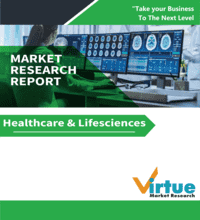Acute Lymphoblastic Leukemia Market Analysis
Acute Myeloid Leukemia Market Analysis (Market Size & CAGR, Epidemiology, Marketed Therapies, Emerging Drugs, Clinical Trials, Key Approvals & Anticipated Loss of Exclusivity, Opportunities, Unmet Needs, Company Profiles)
The Acute Lymphoblastic Leukemia (ALL) market is focused on the treatment of ALL, a rapidly progressing form of leukemia that primarily affects the bone marrow and blood. It is characterized by the overproduction of immature white blood cells (lymphoblasts). This rare but aggressive cancer predominantly affects children, though it can occur at any age. The market comprises drugs targeting various molecular targets and treatment modalities, including chemotherapy, targeted therapies, and immunotherapies, with continued focus on improving patient outcomes and survival rates.
Disruptive Impact and Opportunities:
The ALL market is undergoing significant disruption due to the advent of novel therapies like CAR-T cell therapies, bispecific antibodies, and gene editing treatments. These emerging treatments offer promising solutions for patients with relapsed or refractory ALL, providing new hope for better outcomes. New therapies are increasingly easier to administer, with more focus on precision medicine and targeted therapies, thus minimizing side effects. The landscape is expanding with CAR-T therapies providing options that were previously considered unattainable for patients. This market presents enormous opportunities for both established and emerging companies, as novel treatments are proving more effective and reducing relapse rates. The growth of gene therapies and CAR-T cell therapies represents a new frontier with considerable market potential.
Acute Lymphoblastic Leukemia Market Segmenation - Emerging Drugs
-
PBCAR0191
-
AUTO1
-
KTE-X19
-
UCART19
-
Lisocabtagene Maraleucel/JCAR017
Acute Lymphoblastic Leukemia Market Segmenation - Marketed Drugs
-
Blincyto/blinatumomab/MT 103
-
Asparlas/calaspargase pegol-mknl
-
Kymriah/tisagenlecleucel
-
Besponsa/inotuzumab ozogamicin
-
Iclusig/Ponatinib
Key Companies:
-
Roche
-
AbbVie
-
Amgen Inc.
-
Bristol-Myers Squibb
-
Novartis
-
Pfizer
-
Sanofi
Acute Lymphoblastic Leukemia Market Segmenation - By Type
-
B-cell Acute Lymphoblastic Leukemia (B-ALL)
-
T-cell Acute Lymphoblastic Leukemia (T-ALL)
-
Philadelphia Chromosome-positive Acute Lymphoblastic Leukemia (Ph+ ALL)
-
Philadelphia Chromosome-negative Acute Lymphoblastic Leukemia (Ph- ALL)
Acute Lymphoblastic Leukemia Market Segmenation - By Administration Type
-
Oral
-
Intravenous (IV)
-
Subcutaneous
-
Intrathecal
What’s in It for You?
-
Identifying key emerging therapies and novel treatment approaches in ALL.
-
Insights into market dynamics and future trends in CAR-T therapies and gene editing.
-
Strategic analysis of competitive positioning and market opportunities for leading pharmaceutical companies.
-
A comprehensive understanding of treatment options, regulatory landscape, and pipeline developments.
-
Valuable data for refining market entry or expansion strategies and investment decisions.
Acute Lymphoblastic Leukemia Market Analysis (Market Size & CAGR, Epidemiology, Marketed Therapies, Emerging Drugs, Clinical Trials, Key Approvals & Anticipated Loss of Exclusivity, Opportunities, Unmet Needs, Company Profiles)
1. Acute Lymphoblastic Leukemia Market - Executive Summary
1.1 Introduction
1.2 Objectives
1.3 Key Findings
1.3.1 Market Size 2025 & 2030: By Key Country (10MM)
1.3.2 Global Market Size 2025 & 2030: By Key Segment
1.3.3 Key Investments & Startup Analysis
1.4 Research Methodology
2. Understanding the Disease
2.1 Disease Overview
2.2 Classification
2.3 Signs and Symptoms
2.4 Risk Factors
2.5 Causes
2.6 Disease Biology & Digital Innovations
2.7 Stages & Staging System
2.8 Diagnostic Algorithm
2.9 Current Treatment Practices & Algorithm
2.10 Current Standard of Care and Treatment Gaps
2.11 Patient Demographics and Treatment Pathways
3. Guidelines
4. Unmet Needs
5. Epidemiology and Patient Population
5.1 Epidemiology Key Findings
5.2 Assumptions and Rationale: 10MM
5.3 Epidemiology Scenario: 10MM
5.4 U.S. Epidemiology Scenario
5.5 EU-5 Epidemiology
5.5.1 U.K. Epidemiology Scenario
5.5.2 Germany Epidemiology Scenario
5.5.3 France Epidemiology Scenario
5.5.4 Italy Epidemiology Scenario
5.5.5 Spain Epidemiology Scenario
5.6 Japan Epidemiology Scenario
5.7 China Epidemiology Scenario
5.8 Australia Epidemiology Scenario
5.9 India Epidemiology Scenario
6. Real-world Data & Real-world Evidence
7. Drug Development Landscape
7.1 Existing Key Drug Candidate Profiles/ Marketed Therapies
7.1.1 Blincyto/blinatumomab/MT 103
7.1.1.1 Product Description
7.1.1.2 Regulatory Milestones
7.1.1.3 Other Developmental Activities
7.1.1.4 Pivotal Clinical Trials
7.1.1.5 Ongoing Current Pipeline Activity
7.1.2 Asparlas/calaspargase pegol-mknl
7.1.2.1 Product Description
7.1.2.2 Regulatory Milestones
7.1.2.3 Other Developmental Activities
7.1.2.4 Pivotal Clinical Trials
7.1.2.5 Ongoing Current Pipeline Activity
7.1.3 Kymriah/tisagenlecleucel
7.1.3.1 Product Description
7.1.3.2 Regulatory Milestones
7.1.3.3 Other Developmental Activities
7.1.3.4 Pivotal Clinical Trials
7.1.3.5 Ongoing Current Pipeline Activity
7.1.4 Besponsa/inotuzumabozogamicin
7.1.4.1 Product Description
7.1.4.2 Regulatory Milestones
7.1.4.3 Other Developmental Activities
7.1.4.4 Pivotal Clinical Trials
7.1.4.5 Ongoing Current Pipeline Activity
7.1.5 Iclusig/Ponatinib
7.1.5.1 Product Description
7.1.5.2 Regulatory Milestones
7.1.5.3 Other Developmental Activities
7.1.5.4 Pivotal Clinical Trials
7.1.5.5 Ongoing Current Pipeline Activity
7.2 Competitive Analysis and Differentiation
7.3 Overview of Similar/Competing Drugs in Clinical Trials
7.4 Future Trends and Emerging Drugs
7.4.1 PBCAR0191
7.4.1.1 Product Description
7.4.1.2 Clinical Development
7.4.1.3 Safety and Efficacy
7.4.2 AUTO1
7.4.2.1 Product Description
7.4.2.2 Clinical Development
7.4.2.3 Safety and Efficacy
7.4.3 KTE-X19
7.4.3.1 Product Description
7.4.3.2 Clinical Development
7.4.3.3 Safety and Efficacy
7.4.4 UCART19
7.4.4.1 Product Description
7.4.4.2 Clinical Development
7.4.4.3 Safety and Efficacy
8. Regulatory Strategy and Potential Challenges
8.1 Regulatory Pathways in Key Markets
8.2 Anticipated Regulatory Hurdles and Mitigation Strategies
8.3 Case Studies in Oncology Drug Regulation
8.4 Impact of Potential Changes to Regulatory Framework
9. Commercial Landscape
9.1 Market Size & Growth Rates
9.2 Key Approvals & Anticipated Loss of Exclusivity
9.3 PESTLE & Porter’s Five Forces Analysis
9.4 Market Shares, Positioning/Ranking
9.5 Market Drivers
9.6 Identification of Threats
9.7 Digital Evolution in Commercialization
10. Market Segmentation
10.1 Market by Type
10.1.1 B-cell acute lymphoblastic leukemia
10.1.2 T-cell acute lymphoblastic leukemia
10.1.3 Philadelphia chromosome
10.2 Market by Therapy Type
10.2.1 Chemotherapy
10.2.2 Targeted therapy
10.2.3 Radiation therapy
10.2.4 Stem cell transplantation
10.2.5 Immunotherapy
11. Pricing, Reimbursement, and Access
11.1 Competitive Pricing Analysis
11.2 Reimbursement Landscape and Challenges
11.3 Strategies for Market Access and Equity
11.4 Patient Spending/Expenditure Analysis
12. Future Trends, Disruptions, and Opportunities
12.1 Analysis of Emerging Trends
12.2 Technological Impact
12.3 Impact of Potential Market Disruptors
12.4 Opportunities for Future Development and Expansion
12.5 Considerations for Investment Opportunities
13. Global Market Dynamics
13.1 Regional Regulatory Disparities
13.2 Cross-Border Partnership Strategies
13.3 Global Supply Chain Dynamics
13.4 Case Studies: Success and Failure in Global Markets
13.5 Strategies for Global Expansion and Localization
14. Company Profiles
14.1 Roche
14.2 AbbVie
14.3 Amgen Inc.
14.4 Bristol-Myers Squibb
14.5 Novartis
14.6 Pfizer
14.7 Sanofi
14.8 Genmab A/S
14.9 GlaxoSmithKline PLC
14.10 Novartis AG
Download Sample
Choose License Type
2500
4250
5250
6900



